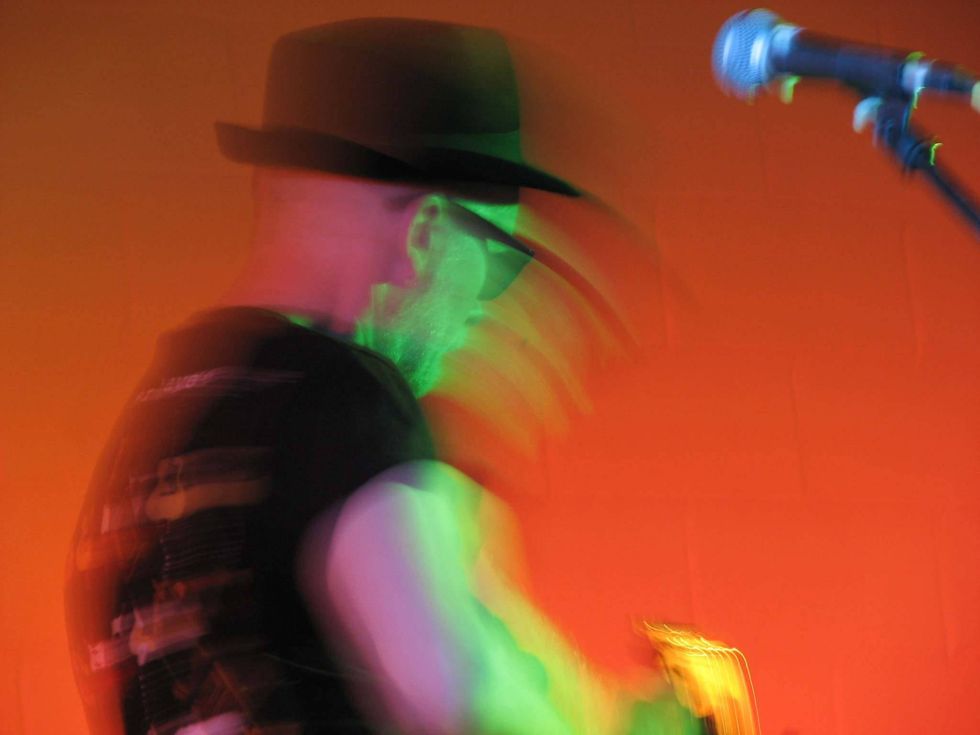I had my first “pro" guitar rig built back in 1996. It was a relatively small rack-based affair with a Rocktron Replifex multi-effects unit that I'd run in my amp's effect loop, and some pedals mounted on a shelf. The pedals were each connected to individual effects loops on a Voodoo Lab GCX eight-loop audio switcher, where I'd plug in my guitar. I could store and recall presets using a MIDI controller with the various effects loops active or bypassed per patch. (The Replifex was switched via MIDI as well.) Once I got used to this rig, I was hooked on switching systems. The ability to hit one button and have all my effects change at once was addictive. No more tap dancing!
Switching systems are commonplace these days, but with one difference. Racks are rather uncommon now, as switching systems are usually pedalboard-based affairs. So, this month, I'd like to touch on the many advantages of using pedalboard-based switching system as the organizational and tonal “heart" of a guitar rig.
Who makes these things? Pedalboard-based audio switchers for guitarists used to be relatively rare. A few companies, such as MusicomLab, The GigRig, and RJM, have been making units like this for some time, however. (I've personally used MusicomLab switchers since 2011.) Boss recently entered the market with their ES-8 eight-loop unit, and followed up with the ES5 (five loops), and the MS3, which has three loops and is also a multi-effects processor. Because Boss is such a global powerhouse of a company, quality switchers are now readily available to guitarists just about everywhere.
They do more than just switch pedals. Many pedalboard-based switchers feature multiple outputs, which allows you—per patch—to A/B/Y different amps, or switch between an amplifier and a DI, which is handy if you want to switch from electric to acoustic guitar. Most units that can do this feature isolation transformers and phase-reversal switches for the outputs—a must for solving ground loops and phase issues. Many are true bypass with selectable buffers, which allows players to balance tonal purity with the need to drive long cable runs to their amp(s).
The GigRig's G2 unit even features programmable pre-gain on every preset, which allows you to buffer, boost, or attenuate your signal. That's a very useful feature when switching guitars. And as I mentioned earlier, the Boss MS3 unit features onboard effects of its own. You can use the internal effects for most tasks and add a few favorite pedals in the three loops. A good number of switchers also feature 1/4"jacks for external control, which allows you to control amp-channel switching and other tasks per patch. Endless possibilities!
What this all means. For me, a well-thought-out pedalboard with a good audio switcher at the heart makes gigging infinitely more enjoyable. Your guitar signal is never running through a pedal unless you actually wantit to, so the tonal purity is a huge plus. It's easy to change from, say, a clean preset with some compression and spring reverb to a full-on high-gain solo tone with delay and plate reverb—all with the click of a single button.
With a rig like this, I can keep my mind on the performance and my eyes on the neck, rather than having to tap dance on multiple pedals. My MusicomLab MK-V MIDI switcher is sometimes controlled by my tech when I'm not close to my pedalboard. He has a MIDI controller offstage at his tech station, which is hooked up to my pedalboard. So, I can be downstage rocking out and he can do my patch changes for me! If you are doing a gig that runs pre-recorded tracks from a DAW along with the live players, you can even have the computer do your pedalboard preset switching via MIDI. This leaves you completelyfree to roam the stage.
What about instant access to my pedals? Most pedalboard-based switchers will allow you to access the individual loops in an on or off state, within a preset. Usually, you can also program the switches to perform functions like amp-channel switching. In other words, if you want to be able to switch amp channels and turn on your tremolo pedal without changing patches, most switchers will allow you to do that. You can always make a preset that has allthe loops on, and then you can just manually switch your pedals on and off at will.
Until next month, I wish you all the best tones!










![Rig Rundown: Russian Circles’ Mike Sullivan [2025]](https://www.premierguitar.com/media-library/youtube.jpg?id=62303631&width=1245&height=700&quality=70&coordinates=0%2C0%2C0%2C0)








